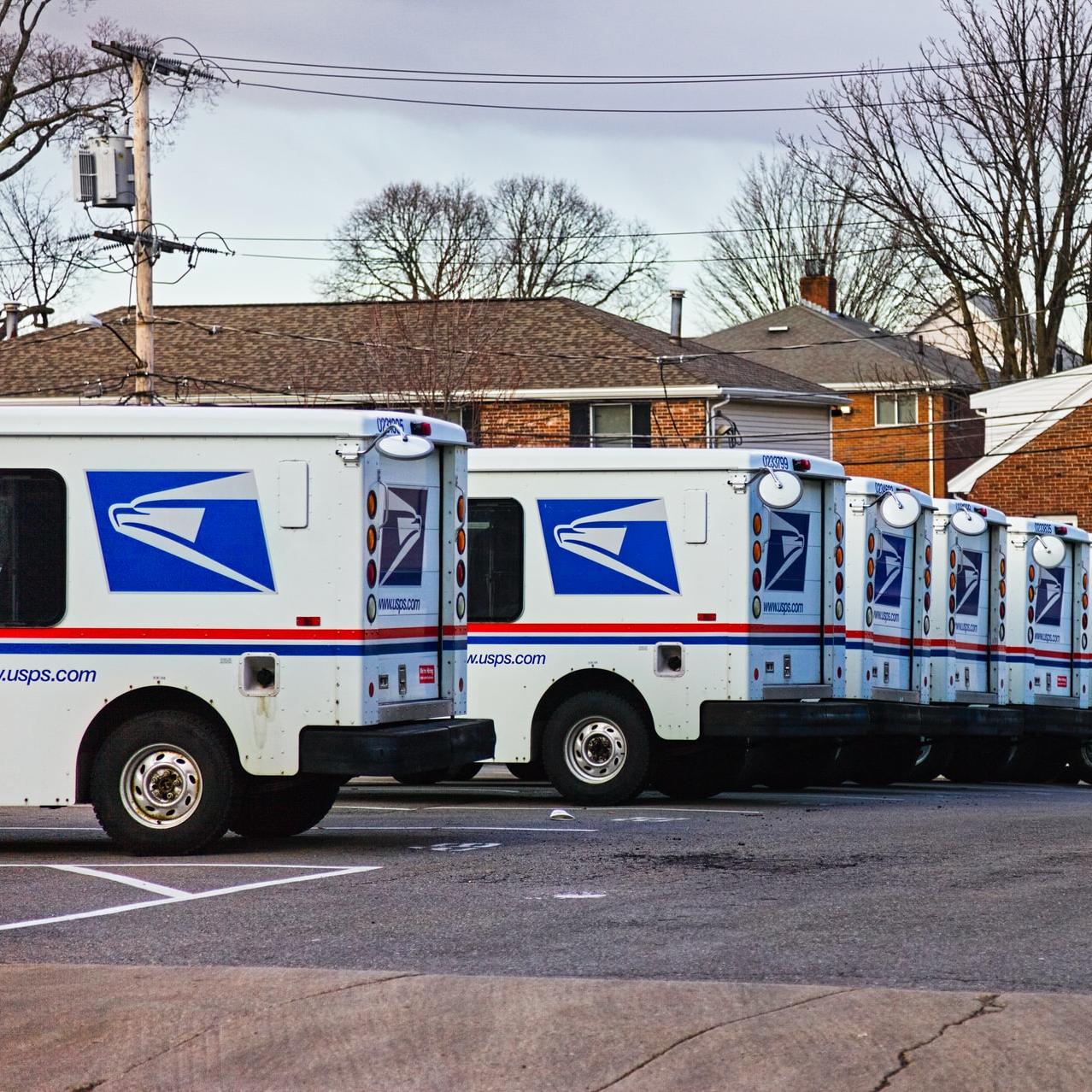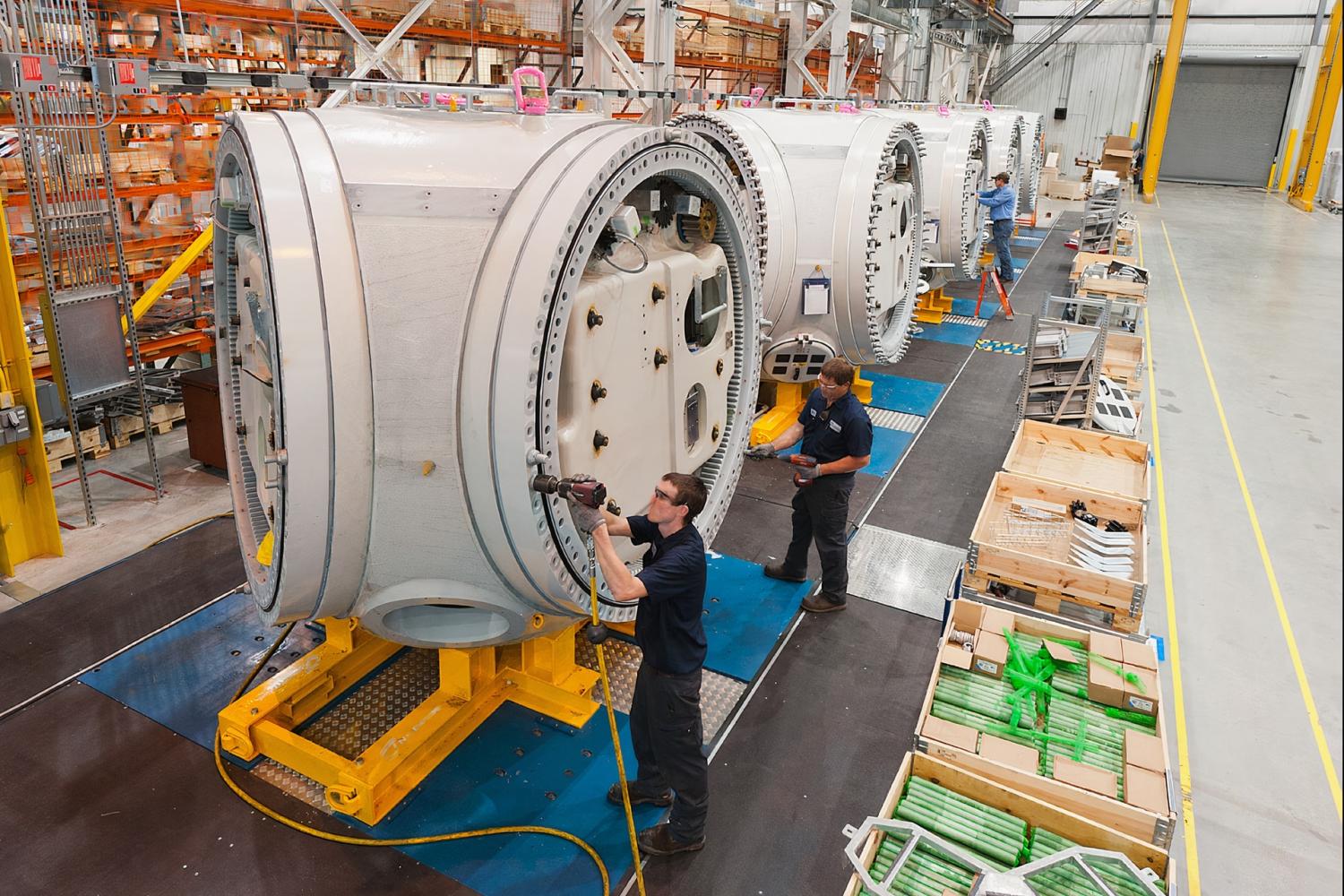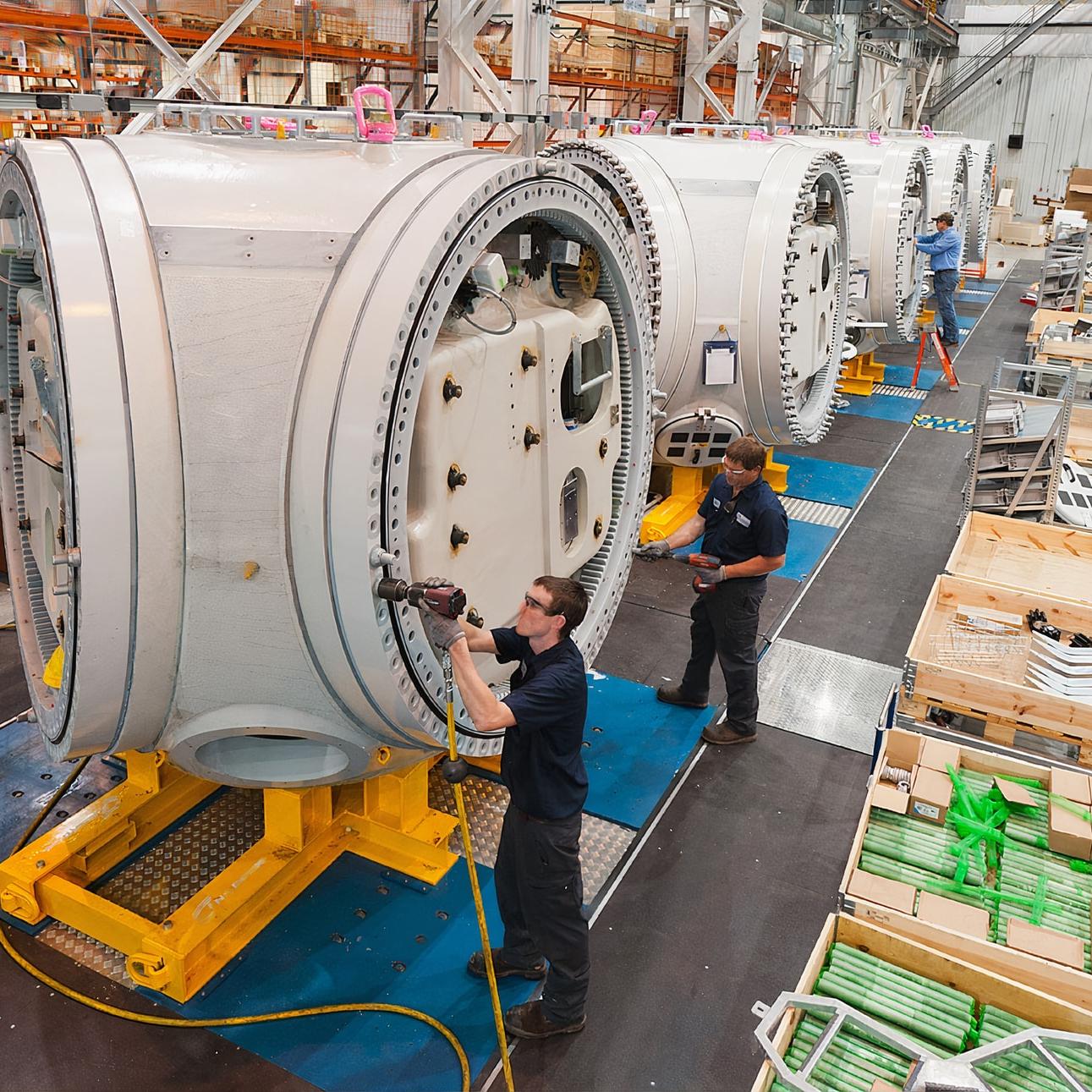Going Beyond Net-Zero Goals, Autodesk Deploys Technology to Help Build a More Sustainable World


Autodesk recently announced that it has reached its net-zero carbon emissions goal across its entire business and value chain. While many companies are just now setting such goals, Autodesk, a leader in 3D design, engineering, and entertainment software, is already realizing its targets. Although this is noteworthy, the company has a relatively small footprint compared to other types of companies. What is most impressive, however, is Autodesk’s impact on both its suppliers and customers.
Autodesk has been working with its cloud providers to ensure they are purchasing 100 percent renewable energy, or Autodesk will do so for them, according to Ben Thompson, Autodesk’s director of sustainable business. Going further, Autodesk recently partnered with CDP to engage its suppliers and boost the disclosure of environmental measurements. Working with CDP enables the company to apply a standard framework for tackling complex issues, helping Autodesk to streamline its efforts to engage suppliers.
A focus on customers, suppliers and now, partners
“Our strategy is threefold. We’re leading within our business, partnering with customers, and transforming industry. By taking that approach, we not only manage our [environmental] footprint, but we can use it to help our customers with their sustainability goals, which also drives our revenue,” said Thompson. “We’re exploring how we partner in new ways to determine what is next in the market or what the new economy will look like.”
In other words, Autodesk is capitalizing on sustainability and innovation through its products. It brings artificial intelligence, 3D modeling, cloud collaboration, and virtual reality tools to create a more sustainable world. In the meantime, the company’s technology allows it to work closely with companies in just about any industry.
For example, United Airlines recently launched a sustainable aviation fuel project to decarbonize its operations in a collaborative effort with corporations. Autodesk has joined the alliance to reduce its travel-related emissions.
Architecture, engineering and construction
Construction and demolition waste together comprise roughly 40 percent of the total U.S. solid waste stream. Although this is terrible from a sustainability standpoint, it also creates a huge opportunity to conserve natural resources and reduce expenses.
“The construction industry is one of the least digitized industries, and it’s responsible for a huge amount of waste,” explains Thompson. “This creates an opportunity to boost margins by getting rid of waste. The industry can increase efficiency through digitalization by better managing their materials through an integrated, multistakeholder process.”
Beyond waste reduction, greater access to vital data can inform architects and engineers in material selection. “The Embodied Carbon in Construction Calculator, EC3, helps in designing low-embodied carbon buildings and navigating the supply chain,” says Thompson. “Now, designers have an easier way to integrate sustainability decisions into their workflow.”
Autodesk recently acquired Spacemaker to assist architects, urban planners, and developers in rapidly creating and evaluating options for buildings and urban designs, emphasizing sustainability. Making such analysis faster and simpler makes it far more feasible to incorporate in the design phase.
“We’re creating solutions that can help customers better understand the impacts of what they are designing and building and how to streamline improvements, so they aren’t too costly,” explains Thompson. “If they are trying to reduce the energy load of a building, it might have tradeoffs with the embodied carbon of the building. By combining this analysis, they can compare and contrast options. It empowers our users to find complex solutions.”
Harnessing technology at Autodesk to improve water infrastructure
It’s a sad reality that 884 million live without basic drinking water services, and 3 billion lack access to basic hand washing facilities (as we go through a global pandemic). Indeed, there is room for innovation in water infrastructure to manage this precious resource properly.
To that end, Autodesk recently acquired Innovyze, helping to position the company as a technology leader in smart water infrastructure. “Technology and artificial intelligence have come a long way,” says Thompson. “There were a lot of things we couldn’t do a decade ago, but now cloud-powered technology like generative design enables designers to understand all the available solutions. The acquisition of Innovyze enables us to take on new challenges, including the water crisis.”
As digital technologies mature, it is increasing what is possible for society. “I’m excited to see what innovation looks like in the future,” says Thompson. “How will we be able to find new efficiencies while satisfying complex needs, such as reducing greenhouse gas emissions, conserving water, and creating material circularity?”
Image credit: Scott Blake/Unsplash
Pressure Intensifies for Fleet Electrification at the U.S. Postal Service


The idea of converting the Postal Service’s entire fleet of 230,000 vehicles to all-electric may seem daunting at first. However, obstacles to fleet electrification are falling away as battery costs drop. If the Postal Service can achieve a rapid transition to electric vehicles (EVs), it could provide other leading fleets with a clear demonstration of the bottom-line benefits of zero-emission technology.
Fleet electrification is coming, but at what speed?
There is no question that the U.S. Postal Service needs to replace its aging fleet of inefficient, fire-prone internal combustion vehicles. The question is how quickly, and with which vehicles.
Earlier this year, Postmaster General Louis DeJoy unveiled a plan that would initially replace only 10 percent of the Postal Service fleet with EVs, while locking in a new contract to purchase thousands of conventional, though presumably fuel efficient, gas-powered vehicles.
With a projected lifespan of 25 years for the new vehicles, the DeJoy plan would leave the Postal Service generations behind as automakers pivot toward the EV market.
The DeJoy plan was met with a firestorm of protest from Democratic members of the U.S. House of Representatives. In a letter to Postmaster DeJoy, Representative Carolyn Maloney (D-NY), who chairs the House Oversight Committee, pointed out that President Biden had set a goal of decarbonizing all federal fleets including the Postal Service.
As a counter-proposal, Representative Jared Huffman (D-CA) sponsored a bill that budgeted an estimated $6 billion for Postal Service fleet decarbonization, under an initial goal of 75 percent for electric vehicles and other zero emission technologies.
Calling the fleet electrification bluff
The pressure increased earlier this week, when Maloney, Huffman, and 50 other House Democrats sent letters to President Biden and House Speaker Nancy Pelosi stressing the urgent need to replace the Postal Service fleet with zero emission vehicles.
“The Postal Service simply cannot afford to lock in another 25 years of reliance on primarily fossil fuel delivery vehicles—to do so would be short sighted and fiscally disastrous for the already struggling agency, which has lost $69 billion over the last eleven years,” they wrote.
They also expressed support for allocating $8 billion for the up-front cost of Postal Service fleet decarbonization, which is the price tag that DeJoy himself suggested.
That cost could come under a $46 billion allocation that President Biden has proposed for a widespread fleet decarbonization program across all federal agencies.
The bottom-line benefits of fleet electrification
The up-front cost of purchasing an electric vehicle is still higher than for comparable cars. However, as early as 2012, evidence began to build that electric vehicles save money over time, compared to conventional vehicles.
A sharp decrease in fuel costs is one factor. Another is the overall simplicity of an electric drive. Compared to internal combustion engines, electric vehicles can save on maintenance and repair costs.
In addition, fleet electrification spares fleet managers from the headaches involved in dealing oil price spikes and shortages, as on display this week when the Colonial oil pipeline became the victim of a ransomware attack.
The letter to President Biden from the 50 Democrats contrasts these advantages with the current state of affairs at the Postal Service.
The letter points out that more than half of the Postal Service fleet vehicles are nearing the end of their 24-year lifespan and average only 10 miles per gallon.
“Maintaining these aging vehicles comes at a high environmental and financial cost: The Postal Service spends $2 billion and over 30,000 hours per year on delivery vehicle maintenance, and in fiscal year 2019 fuel costs alone for these vehicles totaled $491 million,” they wrote.
In addition to direct operational costs, the 50 Democrats also took note of the impacts on Postal Service employees.
“Many of these vehicles also pose risks to the frontline workers who drive them. They have neither airbags nor anti-lock brakes, and there have been numerous accounts of these vehicles catching fire,” they observed.
One item not mentioned in the letter is public relations. As other vehicles decarbonize, the year on year persistence of soon-to-be-obsolete Postal Service trucks will cast the agency as a backwards-looking operation that failed to anticipate a history-making shift in technology, even when that shift was already under way.
How the U.S. Postal Service could lead on fleet electrification
Despite their critical observations, the 50 Democrats concluded their letter on an optimistic note.
“The Postal Service has the potential at this critical moment to be an innovative leader in fleet acquisition and make bold investments in climate-focused reform,” they wrote.
Given that outlook, the Postal Service has an opportunity to model best practices for fleet electrification in the U.S.
Although many fleets are already beginning to electrify, much uncharted territory remains.
A recent survey of 91 fleet managers by the RMI indicates that the Postal Service’s vast fleet could become a proving ground for systems that create new efficiencies and reduce costs.
Adding new EVs to a fleet is only the low-hanging fruit, RMI advises.
“For many organizations, [fleet electrification] will mean restructuring their internal business processes, including procurement, accounting, long-term capital project planning, fiscal budgeting, operations, and more,” RMI explains.
RMI also notes that electrification will involve “a more extensive relationship with their local utilities, more proactive involvement with city and county officials, and a cohesive, integrated strategy across an organization, from the C-suite to individual organizational units.”
As a unionized public agency authorized under the U.S. Constitution, the Postal Service has the potential to leverage these stakeholder relationships to accelerate fleet electrification. That would help present pathways to success for private fleets while accommodating President Biden’s goal of growing the unionized workforce.
Another leadership lesson from the U.S. Postal Service
Unfortunately, the issue of leadership has been problematic during the tenure of DeJoy as Postmaster. An appointee of former President Trump, DeJoy has been accused of intentionally slowing delivery times when an unprecedented number of mail-in ballots flooded post offices around the country last year, reportedly with the aim of sabotaging the 2020 General Election.
In addition, DeJoy’s reputation has not been helped by reporting on his financial stake in several firms in competition with the Postal Service, nor by the recent release of data underscoring the impact of his operational policies on delivery times.
Although DeJoy could be removed by the Postal Service Board of Governors, President Biden has refrained from pressing for his ouster. The hands-off strategy appears aimed at providing Republicans in Congress with a pathway for supporting a reform bill that Maloney is shepherding through the House of Representatives.
So far the Biden approach appears to be successful, as the bill continues to pick up bipartisan support.
In an interesting twist, the latest version of the Maloney bill would enable the Postal Service to provide non-postal services, including to other government agencies. That could create additional avenues for fleet electrification, depending on what those services are.
The new version also reportedly has the support of Amazon and other leading delivery service stakeholders that have been organizing for fleet electrification.
Whether or not DeJoy remains in office, all signs are pointing to a more rapid decarbonization plan for the Postal Service, and a consequent ripple effect on privately operated fleets across the country.
Image credit: Sam LaRussa/Unsplash
In Costa Rica, ‘Pura Vida’ Also Means Climate Action


It literally means "pure life," and pura vida is also a common greeting across Costa Rica. One could also say pura vida applies to this country's push to tackle climate change.
Costa Rica is an undisputed leader in climate action in Central America, having established a goal to reach net zero emissions by 2050, with several interim goals across many sectors that focus on resilience as well as mitigation. For example, the country has set targets for all newly built commercial, residential, and public buildings to be energy-efficient and climate-resilient, including the use of renewables for cooking and the heating of water.
These goals are ambitious and laudable, and they stand out in the region. Costa Rica itself is both small in land mass and population (5 million), but it is politically and economically stable with a relatively high standard of living. The country has long been a leader in ecotourism, and to underscore that as an economically viable economic strategy, Costa Rica’s leadership and its citizens have been bold in pursuing sustainable development across many sectors.
While other countries in Latin American and the Caribbean can and should look to Costa Rica as a leading example of sustainable development, there are challenges that its neighbors’ leaders should consider. As countries prepare for the COP26 summit in Glasgow later this year, Costa Rica’s experience offers several lessons.
Progress on renewables, but future challenges await
Costa Rica’s renewable energy goals are laudable, and in 2020, the country met its 2030 goal of operating its electric grid 100 percent with renewable energy. According to the Costa Rican government, 20 of the country’s largest electricity consumers have reduced their consumption by 25 percent, and a national energy efficiency law is under development. Significant opportunities for energy efficiency in the residential and commercial sectors still exist, and now they are often the cheapest and cleanest first approach.
There are two concerns with Costa Rica’s clean energy goals: the lack of a diverse energy portfolio and ongoing challenges with transportation fuels. Hydropower provides about 70 percent of the country’s electricity. It could never have met its renewable energy target this early without relying on hydropower, but at the same time, reliance on one source that requires substantial infrastructure is risky in and of itself. In 2019, the country was gripped by drought, and despite its ability to keep hydropower plants running, that challenge underscored that in order to keep power generation reliable, Costa Rica likely needs about twice the installed capacity for normal electricity demands.

Further, depending on how a hydropower dam is designed and constructed and its generating capacity, hydropower can cease to be considered as a clean renewable resource. In fact, newer facilities typically create their own problems in the short term. The primary challenge is the decomposition of organic matter in newly flooded reservoirs, which results in the emissions of methane and carbon dioxide. Unfortunately, in tropical countries such as Costa Rica, when the level of organic materials are high, dams in turn increasingly release potent greenhouse gases. Methane, in particular, is especially potent in the short term, potentially releasing more pollutants than a coal-fired power plant.
Costa Rica says it is trying to diversify its power generation portfolio. Wind power now contributes about 17 percent of the country’s electricity, which proved beneficial during the 2019 drought as the same winds that contributed to drought conditions helped turn wind turbines.
Geothermal generates roughly 13 percent of the country’s electricity, but biomass and solar combined provide less than 1 percent, which, when considering that the price of solar has dropped 89 percent over the past ten years, presents more opportunities to invest in an electricity portfolio with a wider range of sources.
To that end, with its new commitments, Costa Rica appears poised to increase its solar generation. As other Latin American and Caribbean countries look to Costa Rica for inspiration in climate goals, a diverse energy portfolio is important, as well as monitoring those aforementioned downstream emissions from the country’s hydropower infrastructure.
Transportation a huge challenge for Costa Rica in the coming decade
Another area of concern in the accounting for greenhouse gas emissions lies within Costa Rica’s transportation sector. Although the country has met its goal for generating 100 percent of its electricity through renewables, the demand for fossil fuels within the transportation sector continues to grow.
Currently, Costa Rica has limited public transportation options. There are 287 cars per 1,000 people, more than the global and Latin American average, and less than 2 percent of those cars are hybrid or electric. Under the government’s recent decarbonization plan, however, the government aims to have a zero emissions public transportation system by 2050. Developing a more sustainable transportation infrastructure presents a difficult challenge, yet a critical one if the country can meet its long-term climate goals. Nevertheless, there are incentives: According to the United Nations Environment Program (UNEP), Latin American could save $621 billion by 2050 if energy and transport sectors reach zero emissions.
The reality is that a significant portion of transportation emissions are out of Costa Rica’s hands. However, they play an important role in regional emissions, especially as travel rebounds post-pandemic. Emissions from airlines and cruise ships arriving into Costa Rica are not easily accounted for. As such travel is almost entirely international, determining any such carbon accounting is complicated.
Airline emissions in particular present a looming challenge. Considerable strides have been made in fuel efficiency and aircraft design, and the goals set by the International Civil Aviation Organization (ICAO), the standards body for that sector, along with the efforts by airline manufacturers themselves, together have helped bring the industry more in line with others. However, while domestic aviation is included in national carbon accounting, the Paris Climate Agreement did not address international aviation. This cannot be dealt with by one country alone.
Emissions from cruise ships pose a whole other challenge. While the global shipping and logistics sector has been part of international climate negotiations, the cruise industry has set its own emissions reductions, which have largely meant that while the global shipping sector is starting to take action on its emissions, most passenger cruise lines have chosen to install scrubbers and continue to use the same conventional, and polluting, fuel. Those scrubbers come with environmental concerns of their own. And much like international air travel, Costa Rica cannot alone address the emissions from cruise ships that dock in its ports.
Costa Rica – a small country, but a model of sustainable development with outsized impact
Costa Rica stands as a model of a country that has built its brand around its environmentalism. The country still faces steep challenges, but its ambitious climate goals can serve as an example for other small nations to figure out a pathway for a decarbonized future. Its standing in the international community gives it a voice, which is could use to help address additional concerns, like international travel, that directly affect its environment. The country’s leadership has shown its willingness to address hard questions, like tackling its domestic transportation sector As countries prepare for the international climate negotiations later this year, small countries like Costa Rica have an opportunity to lead and drive the global climate action conversation.
Image credit: Delphine Beausoleil/Unsplash
The Pace of Change Around ESG May be Changing, But Your Path Shouldn’t


With the Biden administration’s focus on climate risk and the new SEC leadership, we see the likelihood of more robust required disclosure regulations around environmental commitments, human capital disclosures and ESG (environmental, social and governance) reporting increasing. These potential trends may serve to amplify the impact of growing investor and customer expectations that businesses need in order to demonstrate that their purpose is not just words, but actions that benefit all of their stakeholders and their organization.
Companies looking to provide investors and consumers with high-quality data to inform decisions shouldn’t wait for federal mandates around disclosures to begin reporting on ESG. After all, such initiatives are not simply about ticking a regulatory box but creating sustainable business advantages and value. Strategic ESG initiatives are not only good for a company’s stakeholders, its community and our broader society, they are also good for their bottom line.
Businesses have an opportunity to serve as a leading example of how a strategic ESG plan can help mitigate risks, improve the bottom line and build trust with stakeholders. Here are the actions businesses should take to address rising expectations around environmental and other ESG priorities.
Understand climate risks and align ESG efforts with the business strategy
ESG issues are often material to a company’s core strategy and long-term value creation, and many areas within ESG, if not addressed, can expose a company to risks across the environmental, social and governance spectrum. However, a strategic focus on these issues can help alleviate these risks, provide for growth opportunities and build trust with stakeholders by reinforcing that a company is a good corporate steward.
In addition, environmental commitments, such as net zero emissions, and other ESG efforts often require a reshaping of corporate strategy and in turn, a company’s operating and financial model. It’s critical to assess both opportunities and risks to understand the implications of commitments on business growth and identify where reshaping or reinvention is needed.
Establish a baseline and reduction target for emissions
ESG commitments need baselines and milestones, and a strong focus on reporting can help companies understand where they are, track progress against goals and better communicate with stakeholders. For net zero commitments around GHG emissions, companies typically assess emissions across their value chain for one year, setting a baseline to track progress in reductions over time. Companies can then look for ways to make changes across geographies, product lines, supply chains, downstream logistics, investment portfolios, product use or end of life disposals to help reach GHG reduction targets.
When tracking and reporting on net zero commitments or any ESG initiative, companies should prioritize the availability, standardization, accuracy and consistency of their data to demonstrate meaningful progress over time and provide a view into how a company compares to its peers. Until regulators provide further guidance on ESG disclosures, businesses can analogize to financial reporting and implement processes and controls to start reporting on ESG.
Assign oversight responsibility
Close oversight from executive leadership, including the board, is essential to ensure that ESG issues are successfully integrated into the business strategy, effectively executed, and accurately and consistently reported to investors and stakeholders. In fact, these challenges are starting to gain attention in the boardroom - 45 percent of directors say these issues were regularly part of their board’s agenda in 2020, compared to 34 percent the year before. In addition, the audit committee may want to consider whether some level of review of ESG disclosures is needed to provide confidence and trust in the quality and transparency of information reported, whether by internal audit or the external auditors.
The Biden administration has made several announcements signaling its commitment to taking on climate change, and with Gary Gensler’s appointment as SEC Chair, the potential for new disclosure requirements is receiving significant attention and debate. Companies should be emboldened by the opportunity, rise to the occasion and address issues across the environmental, social and governance spectrum. The careful management of these essential ESG initiatives can make any business with such a focus a stronger company in the long-run.
Image credit: Bryan G./Unsplash
This Builder of 3D Prefab Homes Says It Can Tackle the Housing Crisis


The U.S. and California, in particular, are in the midst of a housing crisis. According to Freddie Mac, the U.S. housing market is short 3.8 million homes. A lack of affordable housing primarily fuels the housing shortage. As construction costs increase, homeownership is an elusive goal to many. Could more sustainable building practices, such as the scaling up of 3D prefab homes, help?
Although there have been considerable advances in green building practices, often, these innovations are not adopted by developers. Meanwhile, climate change is causing flooding, sea-level rise, severe storms, and wildfires, and housing needs to be resilient to these forces.
Concern for the environment and humanity inspired the creation of the 3D prefab homes builder Mighty Buildings. The company embraces robotics, 3D printing and automation to create modular homes in California. Mighty Buildings can print a floor, walls and ceiling in 24 hours while dramatically reducing the waste associated with new builds.
“The housing crisis is big enough that there is no one solution,” says Sam Ruben, Chief Sustainability Officer and co-founder of Mighty Buildings, in an interview with TriplePundit. “We’re talking about needing billions of homes globally. Our vision is to be a tool for industry, mitigating the climate impacts of that additional housing.”
Why consider 3D prefab homes?
Traditional home construction generates three to five pounds of waste per square foot. One of the most impressive benefits of Mighty Building’s 3D prefab homes is the cutting of its construction waste by 95 percent. This is a staggering figure considering between 25 and 40 percent of the U.S. solid waste stream is related to the construction industry; only a small sliver of it is recycled.
Mighty Buildings has the big picture in mind and has been working with developers, planners and building departments from the start to understand their needs and concerns. “We believe in disruption through collaboration,” explains Ruben. “We’re excited about learning as we develop our technology. We have been working with UL, who is a global leader and has 100 years of experience. They are uniquely situated to understand our technology.” In fact, Mighty Buildings became the first such company to be certified to UL 3401 for 3D printing in construction.
All of Mighty Building’s models range between 350 and 1,440 square feet, but they plan to move into townhouses and the multifamily housing market soon. The smaller models work incredibly well with urban infill initiatives that reduce sprawl and conserve land. Smaller homes also require fewer resources to heat, cool, and furnish, promoting affordability.
The average new home size in the United States has fallen since 2016. Ruben finds there is pent-up demand for smaller homes in California and believes it is vital to offer right-sized homes. Mighty Buildings produces a line of Accessory Dwelling Units (ADUs) as a secondary house, office, apartment or in-law unit. The line of single-family homes features two to three bedrooms and range from 864 to 1,440 square feet.
Efficient, agile and safe
Mighty Buildings has transformed numerous aspects of its operations to remove many inefficiencies that plague the construction industry. In most homes, a variety of tradespeople must work on the house, often creating scheduling issues. There is also a shortage of skilled builders in many markets, fueling long delays.
By contrast, Mighty Building’s panelized structures are compliant with California building codes and are fire-resistant. The 3D prefab homes are constructed in the company’s Oakland, California, factory using robotics and digitization. Creating houses in the factory allows for precision and quality control that isn’t possible on a traditional building site. This streamlines the construction and permitting process, dramatically cuts labor hours and the time it takes to acquire a new home. The modular homes are then delivered using a truck and put into place by crane.
Assisted by $70 million in venture capital, Mighty Buildings plans to expand its factory capacity and construct 300 homes next year (growing to 1,000 per year in the future). The houses are suitable for various building sites and are made of a non-silicate light stone material and steel components. This home composition presents an excellent opportunity to innovate and move towards a circular design, says Ruben.
“We’re looking at improved formulation by reducing the polymer that is used, having more recycled content, and using new technology like chemical recycling of ingredients to create a circular opportunity. And, the chemical industry is kicking into gear in understanding what it means to be sustainable. Fiber reinforcement helps with dematerialization and allows us to move into producing multifamily housing and reducing the use of steel.”
A bold, climate-neutral future
The company has conducted a life cycle assessment and has set a goal to be carbon neutrality by 2028 while minimizing the use of carbon offsets. Mighty Buildings also has an internal goal to be carbon negative by 2040 by having regenerative practices that reduce carbon in the atmosphere.
Mighty Buildings eventually wants to turn its attention to deep energy retrofits of existing building stock by installing 3D printed panels that attach the outside of the home, creating minimal disturbance to inhabitants.
Ruben believes it is essential to solve the housing crisis in a way that doesn’t exacerbate the climate crisis. He also believes that homes need to be created with sustainability in mind from the beginning. Furthermore, building net-zero energy homes also takes the pressure off of power plants, some of which are coal-fired.
“It’s a dual crisis,” says Ruben. “The climate crisis has a significant impact on housing stock due to wildfires, floods, rising sea level. It is essential to have resilient housing.”
Image credit: Mighty Buildings/Facebook
In the Techno-Racism Fight, Quitting Is Not Good Enough


IBM staked out the high ground over facial recognition last summer, when the company dropped its interest in the technology and warned of the potential for racial bias and human rights abuses. Now IBM is taking the so-named techno-racism fight to a wider arena, with new programs aimed at ensuring a more diverse pipeline of talent for the technology sector.
Techno-racism and the tech industry
The lack of diversity in the U.S. tech industry is a well-known phenomenon, and facial recognition has underscored how bias within the tech company walls can spill into society at large, whether intentional or not.
Earlier this week, CNN took a deep dive into the topic and presented several aspects of the issue.
One leading problem is the application of facial recognition technology to law enforcement. Facial recognition algorithms can be mistaken, and they have been shown to make far more mistakes in identifying people of color and women.
Among other studies, CNN cited a report on more than 100 facial recognition algorithms by the National Institute of Standards and Technology. The researchers found that algorithms “falsely identified African American and Asian faces 10 to 100 times more than Caucasian faces.”
Editor's note: Be sure to subscribe to our Brands Taking Stands newsletter, which comes out every Wednesday.
Another problem is the application of facial recognition technology to financial applications and other important transactions. Mistakes can lead to rejection and other life-changing complications based on false identification, with people of color and women more at risk than white males.
In a related issue, the CNN report also described how bias in algorithms can be rooted in flawed data. Mutale Nkonde, founder of the nonprofit organization AI For People, describes one risk assessment algorithm based on “historical data from a period when Black people could not own property.”
Facial recognition technology: quitting is not enough
When IBM publicly canceled its facial recognition program last summer, its CEO, Arvind Krishna, made it clear that wiping its own slate clean was not a solution.
In a letter to Congress dated June 8, 2020, Krishna noted that former IBM President Thomas J. Watson, Jr. vigorously affirmed the company’s stand on equal opportunity in a letter to employees 70 years ago. However, Krishna cited the murder of George Floyd and other recent instances of racially biased violence in policing to make the point that Watson’s proclamation had little to no impact on racism in America.
Krishna underscored how these broader concerns factored into IBM’s decision to drop the technology. While avoiding lawsuits was probably a concern, it is overplayed by fundamental human rights issues.
“IBM no longer offers general purpose IBM facial recognition or analysis software. IBM firmly opposes and will not condone uses of any technology, including facial recognition technology offered by other vendors, for mass surveillance, racial profiling, violations of basic human rights and freedoms, or any purpose which is not consistent with our values and Principles of Trust and Transparency,” Krishna wrote.
The need for national action
Krishna also emphasized the importance of addressing the issue on a national basis in order to foster progress.
The four years of the Trump administration have underscored the importance of a national, far-reaching effort.
For all the progress over the generations, structural racism is still deeply embedded in the institutions of the United States, and Trump’s tenure in office further underscored the fragility of progress on race in America.
Even as business leaders responded to the Black Lives Matter movement with renewed efforts on diversity training, last fall the Trump administration moved to ban certain types of training from federal agencies and federal contractors alike.
More recently, Republican legislators in various states have been chasing the red herring of critical race theory, a scholarly pursuit that analyzes elements of racial bias embedded in legal systems. State-based Republican lawmakers are also attempting to keep The 1619 Project out of schools (a publication of The New York Times, the 1619 Project describes the foundational role of slavery in American history).
How business leaders can lead the fight against techno-racism
Krishna’s letter provides other business leaders with a roadmap for creating widespread social impact.
“IBM would like to work with Congress in pursuit of justice and racial equity, focused initially in three key policy areas: police reform, responsible use of technology, and broadening skills and educational opportunities,” Krishna wrote.
The educational area is particularly important because it can lead to a new, more diverse generation of creators, innovators, and decision makers in the tech industry.
Although diversity hiring may not eliminate internal bias, the participation of diverse voices can make a difference, as Krishna himself demonstrates.
“We need to create more open and equitable pathways for all Americans to acquire marketable skills and training, and the need is particularly acute in communities of color,” Krishna explained. “At IBM, we see an urgent demand for what we call ‘new collar’ jobs, which require specialized skills but not necessarily a traditional 4-year college degree.”
Expanding the talent pipeline
Krishna cited IBM’s P-TECH initiative for providing high school students access to no-cost associates degrees in STEM fields.
This year, IBM is building on the program in partnership with Miami Dade College (MDC). The school has the largest undergraduate enrollment of any college or university in the U.S. and enrolls more Hispanic undergraduate students than any other. MDC also has the third largest Black undergraduate enrollment in the nation.
As described by MDC, the partners will “collaborate on a joint mission to enable students of diverse backgrounds and experiences to have access to strategic skills necessary to help them succeed in a rapidly changing workplace.”
The IBM collaboration supports MDC’s partnership with the “Data Science for All” diversity initiative of the data literacy firm Correlation One. With the support of IBM, the school will expand its course offerings in the tech area including artificial intelligence, cloud computing, cybersecurity and quantum computing.
Last month, IBM also joined with Citi, Justworks, FanDuel, fuboTV, Meetup, Datadog, VTS, Giant Machines, Infinia ML, Chubb, Cvent and Wunderkind to relaunch a coding bootcamp hosted by the Flatiron School in New York City.
The boot camp is funded through the school’s John Stanley Ford Fellowship program. IBM and the other firms have each committed to hiring at least two Black alumni of the program on a paid apprenticeship basis. The program includes a mentoring regimen followed by opportunities to interview for full-time positions.
Brand reputation and the fight against techno-racism
IBM itself has seen first-hand the lingering reputational impacts that can occur when technology falls into the wrong hands. As detailed in a controversial 2001 book, the company's machines and expertise were deployed by the Nazis to horrific effect during World War II and the years leading up to the war.
When the racial impact of facial recognition technology began to come into focus several years ago, IBM waffled at first. In 2019, the company proposed a “precision regulation” approach in support of its facial recognition programs.
The murder of George Floyd sparked a renewed examination of structural racism in America last year, and IBM traded in its tweezers for a sledgehammer. In addition to enabling creation of a more powerful diversity hiring pipeline, the company has also lobbied in support of the George Floyd Justice in Policing Act of 2021.
As another summer approaches, the issue of police violence continues to fester. Companies that seek to make a real difference should follow IBM’s lead and act strategically on challenges such as techno-racism by supporting programs and policies that can have a national impact.
Image credit: Lianhao Qu/Unsplash
Lifewtr and Häagen-Dazs Amplify Marginalized Voices Through Hollywood Partnerships


Last year, there was much discussion about what constituted “real action” when it came to businesses taking a stand against systemic bias. Supportive corporate social media messages are nice and all, but genuine change requires opportunities for marginalized voices to be heard and shared. Some consumer brands are now working to bring more of these stories and talents to light, with the help of some of Hollywood’s biggest storytellers.
This spring, Issa Rae and Lena Waithe are partnering with Lifewtr and Häagen-Dazs, respectively, to support underrepresented artists both in front of and behind the camera.
Lifewtr and “Life Unseen” as a means to uplift marginalized voices
Last month, the bottled water brand Lifewtr launched its “Life Unseen” initiative, described in parent company PepsiCo’s recent press release as a “new platform in the fight for fair representation in the arts.”
Lifewtr founded Life Unseen in partnership with Issa Rae, a writer, producer and actor probably best known for her Emmy-nominated HBO series Insecure.
The four components of “Life Unseen”
Study: Lifewtr, in partnership with the Institute for Quantitative Study of Inclusion, Diversity and Equity (QSIDE), conducted a study to uncover the biggest “representational blind spots” across fashion, film, music and the visual arts. The resulting report showed that those groups most marginalized in these fields are women, BIPOC (Black, Indigenous and people of color), the disabled and LGBTQ+ citizens.
Artist collective: Lifewtr selected 20 artists from across the aforementioned underrepresented groups to have their artwork featured on the brand's bottles available in stores nationwide starting next week.
Contest: Creators who fall into any of the aforementioned demographics can share their own concept art for future Lifewtr packaging using the hashtag #LifeUnseenContest from now through July 30. Five winners will have their work featured on Lifewtr bottles, and one winner will receive a mentorship from Issa Rae and $10,000 to fund their future creations.
Launch video: The Lifewtr launch video highlights five artists in the Life Unseen collective. It was made in collaboration Color Creative, a company Rae founded with Deniese Davis that “focuses on driving opportunities for underrepresented talent in film, TV and digital platforms."
Editor's note: Be sure to subscribe to our Brands Taking Stands newsletter, which comes out every Wednesday.
Rae described what drew her to “Life Unseen” during a recent interview on The Daily Show with Trevor Noah.
“I know what it’s like to be in those early stages, and be like, ‘If someone just sees my work, if just that one person believing you has a platform, then that could change the game for me,’” she said. “We’re trying to create the pipelines. Basically Lifewtr and I have partnered to find people and artists and creatives who need that opportunity to have their work be seen.”
Häagen-Dazs #ThatsDazs
In late March, Häagen-Dazs unveiled its #ThatsDazs campaign in partnership with Emmy Award-winning writer, producer and actor Lena Waithe.
The highlight of the campaign is a $1.5 million commitment over the next three years “to uplift a new generation of diverse tastemakers and creators.”
The first donation is $100,000 to Waithe’s Hillman Grad Productions Mentorship Lab (named after the fictional HBCU from the 1990s sitcom Different World). The Mentorship Lab is a tuition-free, 10-month fellowship bringing together storytellers from underrepresented communities. The money from Häagen-Dazs will go toward classroom needs, curriculum development, lessons and teacher support for the Lab.
Waithe, who is starring in this month’s new season of the Netflix series Master of None, will also help Häagen-Dazs discover new artists and organizations to promote across social media or through financial commitment.
“When big brands speak about wanting to support marginalized creators, investing in those communities is a great place to start. Creating resources for those that want to hone their craft and follow their dreams is a cause close to my heart,” Waithe said in the press release announcing the #ThatsDazs campaign.
Life Unseen and #ThatsDazs both seek to amplify diverse voices in the creative industries by partnering with Hollywood power players known for speaking in favor of more opportunities for BIPOC content creators. Both Waithe and Rae were signers of last year’s Hollywood 4 Black Lives letter, which called for investment in “developing, producing and distributing anti-racist content that humanizes and advances nuanced portrayals of Black people.” Certainly these corporate partnerships are steps in the right direction - as society has kept these marginalized voices silent for far too long.
Image credit: Cameron Venti/Unsplash
The AAPI Community Shouldn’t Have to Suffer in Silence


Another survey on diversity in the workplace was released this week, and while the results are encouraging, it’s clear plenty of work lies ahead. Last year’s social justice protests after the murder of George Floyd surely convinced more U.S. policymakers and business leaders to push for a fairer and more equitable society. But more often than not, Asian Americans and Pacific Islanders (also often referred to as the AAPI community) have largely been left out of the conversation.
The silence festered during the worst of the COVID-19 pandemic, as one study concluded that Asian Americans have been far more likely to be hospitalized and 49 percent more likely to die compared to whites with similar sociodemographic traits and health conditions — a rate outpacing that of Black and Latino Americans, who also have been stricken and dying at a disturbing rate. Various other studies also found higher death rates among AAPI groups, whether they were South Asians and Chinese residents in New York City or Native Hawaiians, Pacific Islanders and Filipinos living in California.
“Yet these alarming numbers about Asian Americans and COVID get little attention from mainstream media, academics and public health experts. Thus, resources to prevent and treat COVID are not fully deployed, which results in needless death and suffering,” Amy Yee wrote in Scientific American. “Vulnerable Asians — low-income, elderly, immigrants with limited English, and 1.7 million undocumented who can’t readily access health care — are especially at risk. But they are neglected, sometimes until it’s too late.”
That reality is in addition to the increased reporting of harassment, violence and even mass murder of Asian Americans that have occurred over the past year.
Editor's note: Be sure to subscribe to our Brands Taking Stands newsletter, which comes out every Wednesday.
The silence on the toll the pandemic has taken on the AAPI community is also reflected in how these individuals are faring in workplaces across the U.S.
Depending on the source cited, Asian Americans comprise 13 percent of the U.S. workforce, but only hold 6 percent of corporate executive roles. “Asian American white-collar professionals are the least likely group to be promoted from individual contributor roles into management,” Buck Gee and Denise Peck wrote in the Harvard Business Review in 2018.
True, much of the data out there suggests that as a demographic, Asian Americans on average earn the highest incomes among all Americans; yet at the same time, the income gap within the wider AAPI community is the highest when compared to any other ethnic or racial group.
Society’s ghosting of this community, whether it’s been the lack of reporting on the impact of the pandemic or slights occurring within many workplaces, is in large part due to the “model minority myth,” which in truth is a racist trope and wedge.
“For this reason, [Asian Americans] are regularly left out of discussions about discrimination in the workplace and overlooked for promotion. In fact, Asians are often excluded in diversity and inclusion plans entirely,” Christopher S. Tang wrote in a Los Angeles Times op-ed last week. “They are rarely mentioned by the media in economic impact reports, even though they have faced the sharpest increase in long-term unemployment. This is not surprising, since there is little understanding that 12 percent of Asian Americans live in poverty and that there is a huge disparity of education and income levels among Asian Americans.”
Some companies are getting the message. In late March, for example, Bank of America announced that a boost to its racial equality commitment will include targets and programs specifically for the AAPI community.
Further, some Asian American business leaders are taking matters into their own hands, whether it’s leading the U.S. response to the COVID-19 tragedy that is now rampant across India or funding a $250 million pledge to combat anti-Asian discrimination.
Such action is only beginning, as the stubborn fact is that while the AAPI community now makes up 7 percent of the U.S. population, to date it has received less than 0.5 percent of funds distributed by philanthropies and charitable foundations. Considering AAPI residents are projected to be the largest group of U.S. immigrants by mid-century, the business community can do better.
Image credit: Jason Leung/Unsplash
It’s Finally Time to Take the Mental Health Impacts of Climate Change Seriously


“I’m sorry I’ve been so out of touch.” In 2018, a year after Hurricane Harvey, my friend reached out to me to let me know that she had been suffering from depression and nightmares. She and her elderly relative were evacuated out of their flooded home in Houston during the storm, marking their door with a Sharpie the date and time that they had been rescued.
Unfortunately, this is just one of the thousands and thousands of stories of people traumatized by living through the second costliest hurricane in U.S. history.
Climate change affects countless industries, including energy and insurance. And since then, the effects of climate change continue to make themselves known. In 2020 alone, there were 22 separate billion-dollar climate and weather disasters, breaking the previous record of 16 in 2017 (the year Hurricane Harvey and several other major hurricanes struck).
That’s not to mention the trauma of those affected by the hurricanes, wildfires, and many other extreme weather disasters that have taken place over the past several years. According to a recent report by the United Nations Food and Agriculture Organization, natural disasters occur three times more often than they did 50 years ago.
The psychological harm of surviving a natural disaster has been documented for decades. But with climate change, those natural disasters are no longer purely natural – they are getting more intense, frequent and destructive depending on the event. Protecting people’s mental health and avoiding the costly effects of trauma is yet another reason we should invest in economy-wide climate change solutions.
Climate change’s ongoing threat to mental health
In addition to major storms, the U.S. continues to suffer from heatwaves and dramatic drought and flood cycles. This week, the National Oceanic and Atmospheric Administration released its latest U.S. Climate Normals, which is updated every ten years. The findings were stark: Temperatures are unambiguously warmer. The largest increases in temperatures have been in the past two 30-year cycles covered by the U.S. Climate Normals: 1981-2010 and 1991-2020.
The psychological impacts of heat and drought include anxiety, depression and, with heat in particular, increased levels of acute psychosis – frankly, the hotter it gets and the longer it stays that way, the more irritable and aggressive people tend to get. A 2018 study in the journal Nature Climate Change found that climate change may lead to increased suicide rates as temperatures spike. According to the American Psychiatric Association, 48 percent of Americans feel that climate change is already affecting their mental health.
And there is the psychological aftermath of weather and climate disasters, like post-traumatic stress disorder (PTSD), the symptoms of which include nightmares and depression. In the aftermath of Hurricane Katrina, one in six people met the criteria for PTSD, and rates of suicide and suicidal tendencies doubled. PTSD and other mental health effects of catastrophic extreme weather events will likely be felt for years to come.
The disproportionate impacts of climate change
Trauma from weather and climate disasters, intensified by climate change, does not discriminate. There are no exceptions to who may feel the harmful effects of extreme events. However, vulnerable communities – like older people, communities of color, and people with lower incomes – are the ones that bear the brunt of climate change, and the people in those communities are the ones who are least likely to be able to change their circumstances.
A lot of people also have the added stressor of being financially underwater after a storm. Further, many such communities do not have the mental health medical infrastructure that may be present in more affluent populations. Vulnerable communities are typically less able to evacuate in extreme weather, and are more exposed to poor air quality and harmful extreme heat – during these events and throughout the year.
A 2017 study found that about 30 percent of the global population is exposed to temperatures exceeding the “deadly threshold” for at least 20 days each year – and that number would increase to a terrifying 74 percent if emissions continue to grow. The reality is, vulnerable populations will likely make up the majority of deaths in those scenarios.
What’s next in a changing climate
The Weather Company has predicted the 2021 hurricane season, which starts June 1st, to be more active than normal; given what our new normal look like, it’s a grim prospect. Are the children who grow up in a world of extreme weather events and natural disasters destined to face the same PTSD as children who witnessed other traumas like 9/11? Two solutions must be priorities: acting on climate change and creating mental health infrastructure to address the needs of people affected by the impacts of climate change.
Multiple studies have been done to look at the effects of climate change, but stigma still exists around the issue. Further, as we have passed the year mark in the pandemic, trauma accumulates. Having recently lived through the winter storm in Texas, I concur. Because the impacts of climate change are already apparent, adaptation is key. Resilience must not mean only our infrastructure but also our health—mental and physical. A comprehensive climate action plan should include addressing the human implications.
Neighbors and strangers have banded together during and after extreme weather events to help and support each other. Our government and business communities should do the same and recognize how a holistic view of resilience can play a role in safeguarding our mental health.
Image credit: Finn/Unsplash
Six Key GOP Senators Could Tip the Balance on the American Jobs Plan


This Thursday, Republican senators from Idaho, Mississippi, Missouri, Pennsylvania, West Virginia and Wyoming will meet with President Joe Biden at the White House to discuss infrastructure. These six senators could determine the fate of the president’s ambitious American Jobs Plan proposal. They could help ensure that the American economy leaps to the head of the global decarbonization race - or they could enable other nations to leave the U.S. behind in the dust.
Why these six states?
At first glance, the six states sending senators to the White House have little in common. However, as seen through the lens of infrastructure and climate action, each could play a key role in contributing to a competitive, thriving U.S. economy as the global marketplace shifts into clean power and electrification.
In particular, global manufacturers are already beginning to respond to pressure from consumers, supply chain stakeholders, investors and policy makers. They are actively seeking out opportunities to manufacture goods without the aid of fossil energy. That trend will gather steam as clean power technology continues to improve, leading to lower costs that make fossil energy less competitive even without the benefit of support from policy makers.
To cite just one compelling example, the global auto industry is heavily invested in decarbonizing tailpipe emissions by switching to battery and fuel cell electrification. Now the industry is leveraging its considerable purchasing power to pressure steel makers into cleaning up their emissions, too.
Idaho
Idaho is a case in point. Republican U.S. Senator Mike Crapo will represent Idaho at the White House meeting, and his stand on renewable energy is a stark contrast with the former president.
As Co-Chairman of the Senate Renewable Energy and Energy Efficiency Caucus, Senator Crapo made his position on renewables clear during the run-up to Election Day 2020.
“I am a strong supporter of renewable and alternative energy sources,” Senator Crapo wrote in his regular weekly column on September 21, 2020, even as the former president continued to campaign on a fossil energy platform.
In the same column, Senator Crapo also underscored Idaho’s contribution to a decarbonized national economy.
“As a nation, we must set a national energy policy that will meet our energy needs while ensuring an environmentally sustainable future for generations to come,” he wrote.
Idaho is known for low-cost hydropower and nuclear energy, too. It is also the home state of a leading U.S. Department of Energy nuclear research facility, Idaho National Laboratory.
Idaho also touts itself as the home state of the only U.S.-based chip maker, the clean power fan Micron Technology, and it is the home base for a division of the climate action leader Hewlett-Packard.
Overall, the tech sector has become a strong driver of economic growth in Idaho. Look for Crapo to work his state’s hydropower and nuclear energy leverage at the White House meeting. After all, it would be a shame if Idaho missed out on new opportunities to attract more tech jobs.
Mississippi
It is difficult for the other five states to match the Idaho benchmark on renewable energy, but Mississippi does share Idaho’s interest in supporting nuclear energy in the U.S. It is home to the largest nuclear power plant in the U.S., the 1,443-megawatt Grand Gulf Nuclear Power Station.
In addition, the Mississippi economy is driven mainly by forestry and agriculture, which provides it with a strong platform for diving into the carbon market.
Mississippi has also been promoting its advanced manufacturing industry, citing companies including Hybrid Plastics of Hattiesburg. The state is also home to one of the ten largest nanotechnology companies in the U.S., Howard Industries of Laurel. The effort to attract others is doomed to fall behind unless the state improves access to clean power.
Missouri
Missouri also shares a clean power interest with Idaho. Although the state is still heavily reliant on coal for power generation, it has been advertising its hydroelectric, landfill gas, ethanol, biodiesel, wind, solar, biomass and geothermal sources in recent years.
Forbes cites aerospace, food processing, chemicals, printing/publishing, electrical equipment and beer among the state’s leading industries. Many of these sectors are already pivoting into renewables and other carbon-reducing strategies. Beer is an especially noteworthy example, considering the influence Anheuser-Busch has on growing demand for renewables.
In addition, Forbes notes that Missouri is the home state of the former Monsanto (now Bayer), which has been following through on a carbon-neutral pledge.
Pennsylvania
Pennsylvania is a leading U.S. coal and gas producer, but the state’s list of top 50 employers is populated almost entirely by federal agencies and city governments known for their decarbonization goals, as well as health care facilities, academic institutions and the U.S. Postal Service.
The list also includes leading retailers with an interest decarbonization and energy efficiency, including CVS and Walmart, as well as other well-known retailers including Target, Home Depot, Lowe’s, Dollar General and Wegman’s.
The rapidly decarbonizing transportation companies FedEx, UPS and Amazon also make the list.
Especially noteworthy is the battery manufacturer East Penn Manufacturing, which is specifically targeting its energy storage technology at the wind and solar markets.
West Virginia
Of all the six senators to participate in the White House meeting, Senator Shelley Moore Capito of West Virginia is all but certain to spark the most attention.
Her fellow West Virginia Senator is a Democrat, Joe Manchin, who has emerged as the monkey wrench that could prevent Democrats in the U.S. Senate from exercising the full authority of their razor-slim majority. With only 50 seats, the Democrats need all members on board plus the deciding vote of Vice President Kamala Harris.
In a hint of things to come, Manchin has come out in support of the United Mine Workers of America, which is advocating for the American Jobs Plan on the basis of new green jobs along with initiatives that help preserve the nation’s remaining coal jobs.
Wyoming
Wyoming is also a leading coal producer, and apparently policy makers in the state are having a hard time seeing the writing on the wall.
However, with Idaho right next door providing stiff competition, wind energy advocates have spotted an opportunity to nudge policy makers into supporting renewable energy projects.
The Biden administration could help tip the balance, especially if it provides support for some of the coal-protecting measures backed by the United Mine Workers.
Having coal and using it, too
Protecting coal mining jobs is not the same thing as protecting coal power plant jobs, and the Biden administration already appears to be pursuing a solution that could help convince some Republican senators to support the American Jobs Plan and other new clean energy initiatives.
Last month, the U.S. Department of Energy launched a new round of $19 million in funding for a program aimed at helping coal stakeholders to make the switch from energy production into becoming a domestic source for rare earth minerals that support battery manufacturers like East Penn Manufacturing, among other clean tech stakeholders.
“The very same fossil fuel communities that have powered our nation for decades can be at the forefront of the clean energy economy by producing the critical minerals needed to build electric vehicles, wind turbines, and so much more,” said Secretary of Energy Jennifer M. Granholm last month, when she announced the new round of funding.
The funding round covers coal states across the nation, including three of the six states to visit the White House on Thursday: Pennsylvania, West Virginia and Wyoming.
For all his rhetoric on bringing new manufacturing jobs to the U.S. and dominating the global economy, former President Trump never articulated the connection between manufacturing and decarbonization.
If the Republican senators from Idaho, Mississippi, Missouri, Pennsylvania, West Virginia and Wyoming have any interest in fulfilling that unkept promise, supporting the American Jobs Plan would be a good place to start.
Image credit: Unsplash